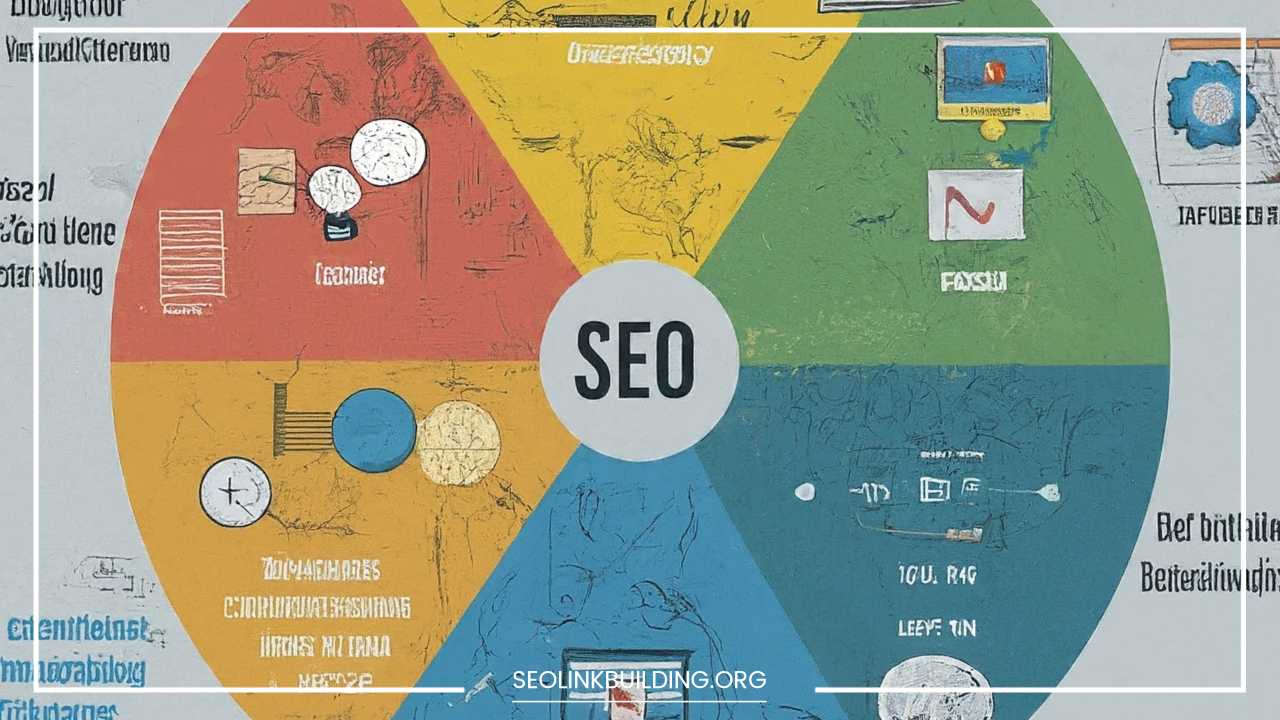SEO Strategies for Higher Google Ranking

Google Ranking
Cracking the Code: How to Improve Your Google Ranking in 2024 (An In-Depth Guide)
In today’s digital age, where information reigns supreme, ranking high on Google Search is the ultimate treasure map. It unlocks a doorway to organic traffic, brand visibility, and ultimately, achieving your online objectives.
But with Google’s ever-evolving algorithm and a sea of websites competing for that coveted first-page position, reaching the summit can feel like scaling Everest blindfolded.
Worry not, SEO adventurers! This comprehensive guide equips you with the knowledge and strategies to confidently navigate the Googleverse and propel your website to the top of search results.
We’ll delve into the intricate workings of Google’s ranking factors, explore powerful SEO techniques, and provide actionable tips to help you dominate the competition.
Demystifying the Googleverse: A Deep Dive into Ranking Factors
While Google’s search algorithm remains somewhat shrouded in mystery, key factors are known to influence your website’s ranking. Here’s a detailed breakdown of these essential elements:
-
On-Page SEO: This refers to the optimization of your website’s content and structure, forming the foundation of your SEO strategy. It encompasses elements like:
- Keyword Targeting: Selecting relevant keywords with high search volume and low competition is crucial. Conduct thorough keyword research using tools like Google Keyword Planner or SEMrush to identify the perfect keywords to target.
- Content Optimization: Craft high-quality, informative content that caters to the user’s search intent. This means creating fresh, valuable, and well-written content that addresses the specific needs and questions of your target audience. Think of it as providing the most satisfying answer to their search query.
- Meta Descriptions and Title Tags: These act as your website’s storefront window on search results pages. Optimize them with relevant keywords while remaining concise and compelling to entice users to click.
- Image Optimization: Don’t neglect the power of visuals! Include relevant, high-quality images and optimize them with descriptive alt text containing your target keywords. This not only improves user experience but also helps search engines understand the content of your images.
- Internal Linking: Structure your website with a clear and logical internal linking strategy. This helps search engines crawl your website more efficiently and distribute link equity throughout your pages, ultimately boosting the ranking of all your content.
-
Content Quality: Google prioritizes high-quality content that goes beyond mere keyword stuffing. Focus on creating informative, engaging, and well-structured content that provides genuine value to your audience. Here are some additional pointers for crafting exceptional content:
- Originality: Strive for unique and fresh perspectives. Conduct thorough research and offer insights that haven’t been covered before.
- Expertise: Establish yourself as an authority in your niche. Showcase your knowledge and provide in-depth analysis on relevant topics.
- Readability: Maintain a clear and concise writing style, making your content easily digestible for a broad audience.
- Content Formatting: Break down your content into digestible chunks using subheadings, bullet points, and short paragraphs. This enhances user experience and makes your content scannable.
- Multimedia Integration: Incorporate visuals, infographics, and even videos to break up text-heavy content and cater to different learning styles.
-
Backlinks: Backlinks are essentially votes of confidence from other websites pointing back to yours. The quality and quantity of these backlinks significantly impact your ranking. High-authority websites linking to yours signal trust and credibility to Google. Here’s how to build a strong backlink profile:
- Guest Blogging: Contribute guest posts to reputable websites in your niche. This not only establishes your expertise but also earns you a valuable backlink.
- Broken Link Building: Identify broken links on relevant websites and reach out to the website owner, offering your content as a replacement. This is a win-win situation, as you fix a broken link for them and earn a backlink in the process.
- Industry Outreach: Build relationships with influencers and industry leaders. Collaborate on content or participate in online discussions to get your website mentioned and potentially earn backlinks.
-
Technical SEO: This encompasses the technical aspects of your website that ensure smooth crawling and indexing by Google bots. It includes factors like:
- Mobile-friendliness: In today’s mobile-first world, having a mobile-friendly website is no longer an option, it’s a necessity. Google prioritizes websites that offer a seamless user experience on all devices. Use Google’s Mobile-Friendly Test tool to assess your website’s mobile responsiveness and identify areas for improvement.
- Page Speed: Nobody enjoys waiting for a website to load. Optimize your website for speed by using a fast web host, compressing images, minimizing HTTP requests, and utilizing caching mechanisms. Tools like Google PageSpeed Insights can help you analyze your website’s speed and provide actionable recommendations for improvement.
- Website Security: A secure website instills trust in users and search engines alike. Ensure your website uses HTTPS encryption and keep your website software and plugins updated to address any security vulnerabilities.
- Structured Data Markup: Implement structured data markup to provide Google with additional information about your content. Think of it as labeling your content for easier categorization. This helps search engines understand the context and meaning of your content, potentially leading to richer search results and improved click-through rates.
-
User Experience (UX): Google prioritizes websites that offer a positive user experience. Here’s how to ensure your website is user-friendly:
- Clear Navigation: Make it easy for users to find what they’re looking for by implementing a clear and intuitive navigation structure.
- Fast Loading Times: As mentioned earlier, optimize your website for speed to keep users engaged and avoid bounce rates.
- Mobile Responsiveness: Ensure your website functions flawlessly across all devices, especially mobile devices.
- Engaging Content: Create visually appealing and informative content that keeps users engaged and coming back for more.
Beyond the Basics: Advanced SEO Techniques to Skyrocket Your Rankings
Once you’ve mastered the SEO fundamentals, consider these advanced techniques to propel your website to even greater heights:
-
Structured Data Markup for Specific Content Types: While basic structured data markup is beneficial, take it a step further by using schema markup specific to your content type. For example, if you have a recipe website, use recipe markup to provide richer search results with information like cooking time, ingredients, and calorie count.
-
Optimize for Voice Search: As voice search continues to gain traction, optimize your content for natural language queries people might use when searching by voice. For instance, instead of targeting the keyword “healthy recipes,” consider targeting long-tail keywords like “how to make healthy meals for beginners.”
-
Focus on Entity Building: Establish yourself as a thought leader and authority in your niche by building your website’s entity. This involves:
- Creating High-Quality Content: Consistently publish informative and valuable content that showcases your expertise.
- Building Relationships: Network with other influencers in your industry and collaborate on projects or participate in online discussions.
- Getting Mentioned: Encourage other websites to mention your business or link to your content by offering valuable insights and engaging in online communities.
-
Track and Analyze Your Results: SEO is an ongoing process. Regularly monitor your website’s analytics to track your progress and identify areas for improvement. Tools like Google Search Console and SEMrush provide valuable insights into your website’s traffic sources, keyword rankings, user behavior, and backlinks. Analyze this data to understand what’s working and what needs tweaking.
Pro Tip: Stay Updated on Google Algorithm Updates
Google’s algorithm undergoes constant refinements, so staying informed about the latest updates is crucial. Follow industry publications and SEO blogs to keep your finger on the pulse of the ever-evolving SEO landscape.
Final Word: The SEO Journey – A Continuous Climb
Remember, SEO is a marathon, not a sprint. Achieving and maintaining a high Google ranking takes time, effort, and ongoing optimization.
By consistently implementing these strategies, staying updated on SEO trends, and creating exceptional content that resonates with your audience, you’ll be well on your way to conquering the Google search landscape and attracting a loyal following.
Bonus: Essential SEO Tools for Your Toolkit
- Google Search Console: A free tool from Google that provides valuable insights into your website’s search traffic, keyword rankings, and technical SEO health.
- SEMrush: An all-in-one SEO tool offering keyword research, backlink analysis, competitive research, and website audit capabilities.
- Ahrefs: Another powerful SEO toolset that provides in-depth backlink analysis, keyword research, and competitor tracking features.
- Moz Pro: A comprehensive SEO platform offering keyword research, on-page optimization suggestions, and link building tools.
By leveraging these tools alongside the strategies outlined above, you’ll be well-equipped to dominate the search engine battlefield and achieve your online visibility goals.













